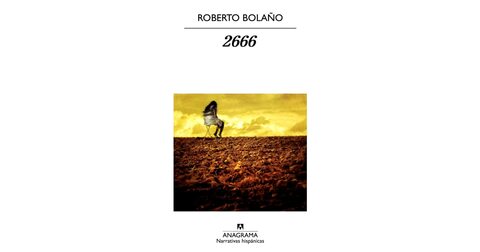

Book Details
2666 is the last novel by Roberto Bolaño. It was released in 2004, a year after Bolaño's death. It is over 1100 pages long in Spanish, and almost 900 in its English translation, it is divided into five parts. An English-language translation by Natasha Wimmer was published in the United States in 2008, by Farrar, Straus and Giroux, and in the United Kingdom in 2009, by Picador. It is a fragmentary novel.
The novel revolves around an elusive German author and the unsolved and ongoing murders of women in Santa Teresa, a violent city inspired by Ciudad Juárez and its epidemic of female homicides. In addition to Santa Teresa, settings and themes include the Eastern Front in World War II, the academic world, mental illness, journalism, and the breakdown of relationships and careers. 2666 explores 20th-century degeneration through a wide array of characters, locations, time periods, and stories within stories.
The novel is substantially concerned with violence and death. According to Levi Stahl, it "is another iteration of Bolaño's increasingly baroque, cryptic, and mystical personal vision of the world, revealed obliquely by his recurrent symbols, images, and tropes". Within the novel, "There is something secret, horrible, and cosmic afoot, centered around Santa Teresa (and possibly culminating in the mystical year of the book's title, a date that is referred to in passing in Amulet as well). We can at most glimpse it, in those uncanny moments when the world seems wrong."[7]
The novel's five parts are linked by varying degrees of concern with unsolved murders of upwards of 300 young, poor, mostly uneducated Mexican women in the fictional border town of Santa Teresa (based on Ciudad Juárez but located in Sonora rather than Chihuahua) though it is the fourth part which focuses specifically on the murders.
Author
Other Details
Page Count: 1128
Language: English, Spanish
Country of origin: Mexico (MX)
Awards
Award Type: National Book Critics Circle
Category: Fiction
Result: won


